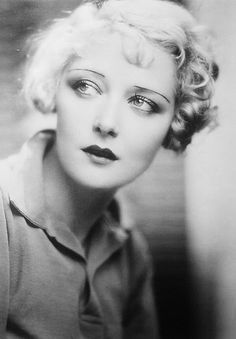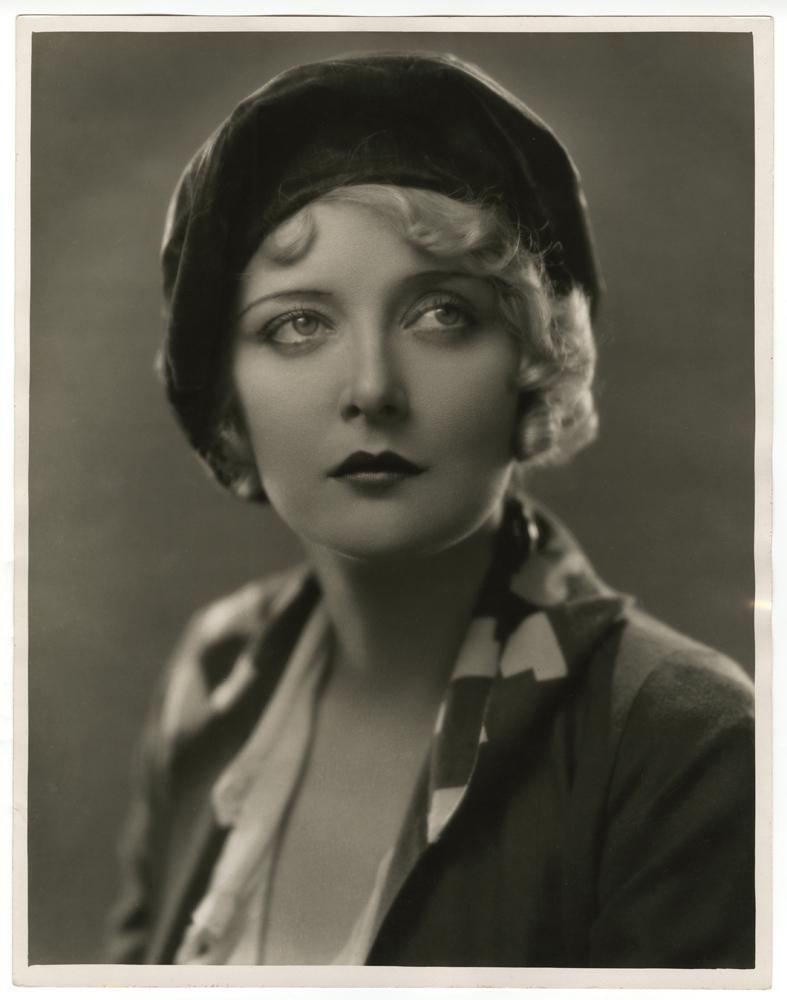Mary Nolan (Mary Imogene Robertson)

While working as a model, Mary Nolan was discovered by Florenz Ziegfeld who hired her as a dancer in his Ziegfeld Follies. As a showgirl in New York, she performed under the name “Imogene “Bubbles” Wilson” (the first of four stage names she used during her career). She soon became one of the most popular Ziegfeld Girls. Nolan’s impact was so profound that columnist Mark Hellinger said of her in 1922, “Only two people in America would bring every reporter in New York to the docks to see them off. One is the President. The other is Imogene “Bubbles” Wilson.” While working in the Follies, Nolan began a tumultuous and highly publicized affair with blackface comedian and actor Frank Tinney. Tinney, who was married to former singer and dancer Edna Davenport with whom he had a young son, drank heavily and reportedly physically abused Nolan regularly. On May 24, 1924, Tinney and Nolan got into a physical altercation in her apartment after he awoke to find her alone with a male reporter. After the altercation, Nolan attempted suicide. On May 28, she appeared before New York City Magistrate Thomas McAndrews to report the assault and to press charges against Tinney. Nolan maintained that Tinney beat her and “chastised” her maid, Carrie Sneed. Nolan had bruises on her head and body while Sneed, who came along with her as a witness, was also injuries. Tinney was arrested at his Long Island home the following day. In June 1924, the case went before a grand jury. Based on the evidence, the jury refused to indict Tinney on assault charges. Afterwards, Tinney claimed the whole ordeal was a publicity stunt concocted by Mary Nolan.
After the grand jury hearing, Tinney decided to leave New York to perform in vaudeville in England. In early August 1924, he booked a trip on the Columbus ocean liner. Two days before Tinney was set to leave, he and Mary Nolan reconciled and were photographed together outside of a Broadway theatre. Tinney smashed the camera of the photographer who took their photo and was later sued for assault. In order to avoid reporters, Tinney decided to board the Columbus the day before his scheduled departure. While waiting to board the ship on August 5, Tinney was served with papers informing him that his wife Edna Davenport had filed for legal separation. At 8 a.m. the following morning, Nolan showed up to bid Tinney farewell. The two stayed in Tinney’s cabin to avoid reporters. Nolan had to be physically escorted off the ship after ignoring the departure whistle. Nolan wept as she watched the Columbus depart and told reporters on hand that she was still in love with Tinney. She stated that Tinney was “the only thing in my life. I know it. You know it. So why should I beat around the bush?” Mary Nolan’s tearful goodbye to Tinney was covered by the media which prompted Florenz Ziegfeld to fire Nolan later that day. Ziegfeld said that he fired Nolan because she had promised to end her relationship with Tinney. He added, “She broke her promise and I discharged her on account of the notoriety and also to prevent a possible disruption of the morale of my cast.”
On September 20, 1924, Mary Nolan set sail for France where she was scheduled to appear in vaudeville. She made her way to London in October where she reunited with Frank Tinney. By December 1924, Tinney had resumed drinking and began to physically abuse her again. In early 1925, Nolan finally ended the relationship. She then traveled to Germany where she would work in films for the next two years. While in Germany, Mary Nolan performed under the name “Imogene Robertson”. Her first German film was Verborgene Gluten, released in 1925. Later that year, she appeared in Die Feuertänzerin for Universum Film AG. She received good reviews for her work in the film which prompted UFA to offer her a contract for $1500 a week. Nolan worked steadily in Germany from 1925 to 1927, and continued to receive favorable reviews for her acting. While in Germany, she received offers from Hollywood producers to appear in American films but turned them down. She finally relented after Joseph M. Schenck offered her a contract with United Artists. She returned to the United States in January 1927. Nolan’s return to the United States was covered by the press who were still interested in the scandalous “Bubbles” Wilson. Several women’s groups protested her making films in the States while Will H. Hays also expressed doubts about her embarking on a career in Hollywood. To solve the problem of audiences connecting her with her scandalous past, United Artists suggested she change her name to “Mary Nolan”. She made two films while under contract with United Artists; she appeared in an uncredited bit part in Topsy and Eva (1927), and a supporting role in Sorrell and Son (1927).
In August 1927, Mary Nolan left United Artists and signed with Universal Pictures. Her first film for the company was Good Morning, Judge, starring Reginald Denny for which she received good reviews. In 1928, she was loaned out to Metro-Goldwyn-Mayer for West of Zanzibar. The film stars Lon Chaney and Lionel Barrymore, with Nolan cast as Chaney’s defiled daughter Maizie. The film was a hit and Nolan received favorable reviews for her work in the film. The following year, she was loaned to M-G-M again for the romantic drama Desert Nights, and cast opposite John Gilbert. The film was another financial success for M-G-M and served to boost Nolan’s career. Shortly after signing with Universal in 1927, Nolan began a relationship with another married man, studio executive Eddie Mannix. Mannix used his clout to further Nolan’s career and was responsible for her loan outs to M-G-M. Shortly after Desert Nights was released in 1929, Mannix abruptly ended the relationship. This angered Nolan who threatened to tell Mannix’s wife Bernice of their affair. Mannix became enraged and beat her unconscious. Nolan hospitalized for six months and required fifteen surgeries to repair damage Mannix inflicted on her abdomen. While hospitalized, Nolan was prescribed morphine for pain. She eventually became addicted which contributed to the decline of her career.
Mary Nolan’s career and reputation took another hit when, in 1930, she was fired from the film What Men Want. Nolan got into an argument with the film’s director, Ernst Laemmle, after she learned she was the only cast member who hadn’t received a close up shot. Laemmle banned Nolan from the set and she was subsequently fired. After threatening to file a lawsuit against Universal, the studio bought her out of her contract in January 1931. That same year, Nolan was the subject of a drug investigation after two nurses who had cared for her when she was hospitalized signed affidavits claiming that she was injecting morphine. Nolan denied the allegations and claimed the nurses were lying in an attempt to ruin her reputation and career. An investigation later cleared her of the charges. Due to her reputation for drug use and temperamental behavior, Nolan could not find work with any major studio. For the remainder of her career, she appeared in supporting roles in low-budget films for Poverty Row studios. She made her final appearance in the 1933 mystery film File 113, for Allied Pictures Corporation. On October 31, 1948, Mary Nolan was found dead in her Hollywood apartment at the age of 45. An autopsy later determined that Nolan had died of an overdose of Seconal. Her death is listed as an “accidental or suicide”. Her funeral was held on November 4 at the Utter-McKinley & Strother Hollywood chapel in Hollywood. Nolan was buried at Hollywood Forever Cemetery.
Born
- December, 18, 1902
- USA
- Louisville, Kentucky
Died
- October, 31, 1948
- USA
- Hollywood, California
Cause of Death
- barbiturate overdose
Cemetery
- Hollywood Forever Cemetery
- Hollywood, California
- USA



